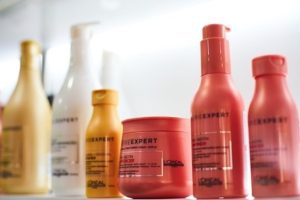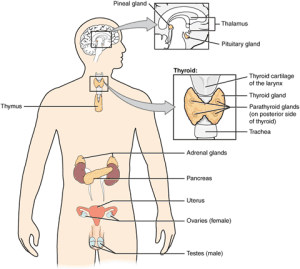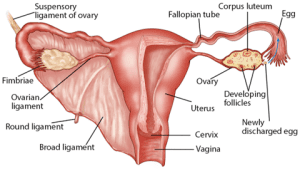Posted on Wednesday, July 12th, 2023 at 9:18 pm
Chemicals in hair relaxers can cause ovarian cancer
Recent studies have found that common hair relaxers may be linked to the risk of serious health problems, including ovarian and uterine cancer. These hair relaxer products have been shown to contain several dangerous compounds, including endocrine-disrupting chemicals. As of May 2023, more than 100 people have brought lawsuits against the hair relaxer defendants in this case.
Alongside law firms across the country, Wallace Miller is bringing chemical hair relaxer cancer lawsuits against the manufacturers of these hair relaxer products.
Have you or a loved one been exposed to toxic hair relaxers? If you think that you may have been impacted by the toxic chemicals used in these products, contact Wallace Miller today for a confidential and free consultation about whether you can file a hair relaxer lawsuit. You can reach our office at (312) 261-6193 or fill out our online questionnaire to receive an answer in minutes.

The Chicago courthouse of the US District Court for the Northern District of Illinois. Photograph courtesy of the US District Court.
Why is the hair relaxer ovarian cancer lawsuit happening now?
Several recent studies have highlighted the dangers of hair relaxer chemicals, including increased ovarian and uterine cancer risk. This scientific evidence gained wider attention in 2022 when a study published in the Journal of the National Cancer Institute by the National Institutes of Health found that prolonged exposure to hair relaxers is linked to higher rates of uterine cancer.
Researchers examined data from more than 30,000 patients over ten years. Using the information from these patients, who were between the ages of 35 and 70, they found that frequent hair relaxer use (defined as using hair relaxers four or more times a year) was linked to a higher risk of uterine cancer. Patients who used chemical hair straightening products were more than twice as likely to develop uterine cancer than those who did not.
Dr. Alexandra White, the head of the National Institute of Environmental Health Sciences and the lead author of the hair relaxer study highlighted the doubling rate as a cause for concern. “We estimated that 1.64% of women who never used hair straighteners would go on to develop uterine cancer by the age of 70,” she said, “but for frequent users, that risk goes up to 4.05%.”
While this landmark study looked at those who had developed uterine cancer specifically, recent studies have also shown a link between ovarian and breast cancer risk and the use of hair.
In 2021, Dr. White oversaw a study of more than 40,000 participants and tracked their likelihood of an ovarian cancer diagnosis compared to their use of hair straightener products. Frequent use of hair relaxers was associated with an increased risk of ovarian cancer. White wrote, “Our novel findings suggest that frequent use of hair straighteners/relaxers or pressing products, primarily used by African American/Black women, and possibly permanent hair dye, may be associated with ovarian cancers.”
Women bring new hair relaxer lawsuits against chemical hair relaxer products
As a result of the scientific evidence linking the use of hair relaxer products to ovarian and uterine cancer, more than 100 plaintiffs across the country have brought their hair relaxer cancer lawsuits to court.
These hair straightener lawsuits were initially filed in 19 states, including California, Georgia, Illinois, Missouri, New York, and Ohio. In February 2023, the active hair relaxer lawsuits were consolidated in federal court under US District Judge Mary Rowland. The federal court is in Chicago, in the Northern District of Illinois.
The attorneys at Wallace Miller are proud to fight for the plaintiffs in the cancer lawsuits. Three hair relaxer lawyers from Wallace Miller have been appointed to leadership positions on the hair relaxer lawsuit. Attorney Molly C. Wells is serving on the Leadership Development Committee, Edward Wallace is serving as Liaison Counsel, and Mark Miller is serving as Co-Chair of the Law and Briefing Committee. In cases like these, where the fraud or negligence of corporations caused harm to individuals, Wallace Miller has an established track record of obtaining justice for our clients.
Who are the chemical hair straightener defendants?
Several of the largest cosmetic companies have been listed as defendants in the chemical hair relaxer lawsuits filed. These include L’Oréal, Revlon, SoftSheen-Carson, and Strength of Nature. Hair products produced by L’Oreal and its subsidiaries, including SoftSheen-Carson, currently play the largest alleged role in the lawsuit. These
Products manufactured by Revlon include popular chemical hair straighteners like Crème of Nature and Revlon Professional Conditioning Crème Relaxer, while Strength of Nature’s products include Motions and Soft & Beautiful.

Photograph by Pixabay.
What are hair relaxers?
A hair relaxer, also known as a hair perm or a chemical hair straightener, is a cosmetic product that changes the texture of hair to make it flatter and smoother. Used predominantly by Black women, hair straightening chemicals are applied topically to the hair at home or in a salon.
These hair straightening products break the protein bonds in individual hair strands. Hair comprises three layers: the core medulla, the cortex, and the protective outer cuticle. Chemical relaxers break down the disulfide bonds in the cortex, making the hair straighter.
This effect is permanent on the parts of the hair that the hair relaxer is applied to, but new growth will maintain the individual’s original hair texture. As a result, many women use hair relaxer products regularly to maintain their hairstyle. Specific instructions vary by product, but many chemical relaxers recommend application every six to eight weeks. Many women have used these chemical hair relaxer products for decades. Now, plaintiffs in the hair relaxer cancer lawsuits claim that these chemical hair relaxer products cause significant adverse health effects, including ovarian and uterine cancer, uterine fibroids, and breast cancer.
Understanding the history of chemical hair straighteners
Black inventor Garret Morgan developed the first chemical hair straightener in 1913. This prolific inventor, who also developed the gas mask and improved traffic lights, discovered that the compound tended to straighten the fibers it came into contact with during his work on sewing machines. After experimenting on animals and on his hair, he began marketing the chemical as the first hair relaxer, Hair Refiner Cream.
In the 1970s and 1980s, consumers began to notice that mass-market chemical hair straighteners like those produced by Dark & Lovely caused damage to the hair and scalp, including breakage, thinning, and chemical burns. As a result, corporations came out with “gentle” or “no-lye” hair relaxer alternatives, which used other chemicals, like guanidine carbonate and calcium hydroxide, instead of lye.
Hair relaxer manufacturers like L’Oréal and Revlon claim that these products are safer and more natural than lye-based hair relaxers, and they continue to market them aggressively to Black women and children. Despite these safety claims, recent studies indicate that the chemicals in these hair relaxer products are much more dangerous than consumers have expected.
The history of hair discrimination against black women
Throughout the history of the US, Black women have faced hostility, scrutiny, and discrimination based on their hair. This began during the US slave trade, when people kidnapped from Africa were often forced to shave their heads. During the era of slavery, enslaved individuals whose hair was straighter were more likely to have household positions, leading to increased autonomy and chances of freedom.
These racist attitudes about natural Black hair continue to operate in modern society. To succeed in majority-white spaces, many Black women experience pressure to style their hair to fit European standards of “professional” appearance.
These styles often require the use of dangerous chemical products like hair relaxers. A study from the Johns Hopkins Bloomberg School of Public Health found that more than half of Black participants used chemical hair straighteners before age 10.
The manufacturers of hair relaxers use this social, cultural, and financial pressure to sell their products. Many top-selling hair relaxer brands exclusively feature Black women in their advertisements and highlight the importance of straight-haired styles, reinforcing the stigma against natural hair.
Prominent brands that manufacture hair straightening products like L’Oréal, Revlon, Godrej Consumer Products, and Namaste Labs continue to build their profits partly on such products. 2020 the global Black hair care market was estimated at $2.5 billion. Hair relaxers alone accounted for $718 million of that revenue.
Dangerous chemicals in hair relaxer products
The cosmetic companies in the chemical hair relaxer lawsuit have marketed their products as gentle and safe. However, the chemicals in these products, including endocrine-disrupting chemicals like DEHP, have been linked to increased risk of ovarian and uterine cancer and other health problems like uterine fibroids, breast cancer, and infertility.
What are endocrine-disrupting chemicals?
The endocrine system, shown below, is a network of glands and organs that manages the body’s hormones. It helps coordinate nearly every process in the body, including metabolism, reproduction, development, and stress responses.

A diagram of the endocrine system, including a number of glands and organs. OpenStax College, CC BY 3.0, via Wikimedia Commons.
Certain substances known as endocrine-disrupting chemicals (EDCs) have been found to “interfere with the synthesis, secretion, transport, binding, action or elimination of natural hormones in the body that are responsible for development, behavior, fertility and maintenance of homeostasis.” In simple terms, EDCs damage hormone regulation and reproductive processes. These disruptions can increase the risk of medical problems like breast cancer, tumors, developmental disorders, and birth defects.
EDCs are broadly considered dangerous to humans by the scientific and medical community. Since 2009, the European Union has banned their use in pesticides for their potential effects on those exposed.
However, many US cosmetics still include EDCs. A loophole in US law allows manufacturers to include chemicals not disclosed on their packaging under the umbrella term of “fragrance.” While this is designed to protect companies’ trade secrets, corporations can add dangerous chemicals to their products without telling the consumer, as long as those chemicals are related to product scent.
As a result, many US cosmetics include EDCs without mentioning the chemicals on the packaging. In particular, chemical hair relaxers have been found to contain high concentrations of these compounds.
What is DEHP?
Di(2-ethylhexyl)phthalate, or DEHP, is an EDC initially developed in the 1940s to make plastics more flexible. Often called a “plasticizer” due to its most common use, it’s frequently added to hair products because it creates a gel-like texture while preserving the products’ scent.
Due to how it breaks down in the body and creates harmful metabolites, the Environmental Protection Agency classifies DEHP as a “probable human carcinogen.” It has been linked with several endocrine-related conditions, including ovarian and uterine cancer, abnormal fetal development, infertility, and uterine fibroids.
Countries, including Australia, Canada, Mexico, Japan, and the European Union, have banned DEHP and other endocrine-disrupting chemicals from cosmetic use. Still, manufacturers of chemical hair relaxers in the US continue to use these chemicals in their products without disclosing them to consumers.
What is ovarian cancer?
The ovaries are two reproductive glands located on either side of the uterus (or womb). They produce eggs for reproduction, which travel through the fallopian tubes into the uterus. In addition to producing eggs, the ovaries are a main source of estrogen and progesterone hormones.

A diagram of the female reproductive system focusing on the ovaries. https://zealthy.in/en, CC BY-SA 4.0, via Wikimedia Commons.
Ovarian cancer is when cells in the ovary begin to grow out of control. These cells can form tumors and spread to other parts of the body. Many types of ovarian cancer are categorized based on the type of cell in which the cancer starts.
While ovarian cancer is not as common as uterine or endometrial cancer, it has the lowest survival rates of all female gynecological cancers (cancers occurring in the reproductive organs).
The three main types of cancer are based on the three main cell types in the ovaries:
Epithelial ovarian tumors: These form in the epithelium, or outer surface of the ovary. They are the most common type of ovarian tumors.
Ovarian germ cell tumors: These tumors form from the cells that produce the eggs in the ovaries.
Ovarian stromal tumors form in the stroma, or structural tissue that holds the ovaries together.
Who can get ovarian cancer?
Ovarian cancer is a relatively rare, making up just over two percent of cancers found in women. However, it is often found later than other cancers and accounts for a disproportionate number of deaths in women—nearly five percent. Non-Hispanic Black women are less likely to be diagnosed with ovarian cancer than other demographics. However, they have the worst rates of cancer survival among all groups of U.S. women surveyed
Anyone with ovaries can develop ovarian cancer. Some factors associated with higher risk include age, genetics, smoking, exposure to certain chemicals, body size, and previous cancer. The biggest risk factor is simply getting older—about half of women diagnosed with ovarian cancer are over 63.
What types of cancer are associated with chemical hair relaxers?
The current research on chemical hair relaxers and uterine and ovarian cancer highlights a few specific types that may be correlated with higher risk. Although new research is constantly emerging on the link between hair straighteners and health conditions or cancers that develop in the outer surface of the ovary. These are the most common types of ovarian cancers, accounting for about 90% of ovarian cancer cases in the US.
Our firm is looking into chemical hair straightener lawsuits for clients who have been diagnosed with the following types of epithelial cancer:
Serous ovarian cancer
This is the most common type of epithelial cancer, accounting for 75% of ovarian cancer cases. It arises from the serous membrane, a thin lining inside the ovaries. If it is diagnosed early on, serous cancer responds well to treatment. However, because it tends to spread quickly into surrounding tissue, people diagnosed with this cancer later have a lower survival rate.
Endometrioid ovarian cancer
The second most common epithelial cancer, endometrioid cancer is often associated with endometriosis, a painful condition in which cells similar to the lining of the uterus grow outside of the organ. It may have a slightly better survival rate than serous ovarian cancer, but catching it early is crucial for treatment.
Mucinous ovarian cancer
This type of cancer is rare and can be difficult to diagnose. It gets its name because tumors in mucinous ovarian cancer are largely made up of cells coated in mucus. It usually develops after another cancer spreads to the ovary, although it can develop in the ovary first.
Clear-cell ovarian cancer
Clear-cell ovarian cancer is another rare type of epithelial cancer in the US, although it accounts for one in four ovarian cancer cases in East Asia. It has been linked to endometriosis and responds less well to chemotherapy than other types of cancer.
Undifferentiated ovarian cancer
In undifferentiated or unclassifiable ovarian cancers, the cells are very underdeveloped. As a result, it is difficult to tell what type of cell the cancer started from and, therefore, what category of ovarian cancer the disease belongs to.
Is ovarian cancer the same as uterine cancer?
Cancers are generally named based on the organ or tissue in which the malignant cells originate. While the ovaries and the uterus are part of the reproductive system, they are different organs and, therefore, different types of cancer.
Prolonged exposure to chemical hair relaxers has been linked to an increased ovarian and uterine cancer risk. If you believe that chemical hair straighteners have harmed you or a loved one, you may be eligible to file a hair relaxer lawsuit. Contact Wallace Miller at 312-261-6193 for a confidential and free consultation, or use our online questionnaire to evaluate your potential new hair relaxer lawsuit in minutes.

Photograph by Pixabay.
The risk of ovarian cancer in African American women
While African American women are less likely than white women to be diagnosed with ovarian cancer, they are much more likely to die. As of 2021, the five-year survival rate for all types of ovarian cancer is 46% for white patients but only 36% for Black patients. In fact, Black patients live the shortest amount of time of members of any group after diagnosis, regardless of what stage of cancer they have.
Racial disparities are widespread and severe throughout the field of healthcare. Across the board, Black patients are less likely to receive adequate diagnoses and care. This is due to several factors, including limited physical access to healthcare in Black communities, economic barriers to access, biased and racist healthcare providers, a lack of Black individuals in clinical studies, and a warranted mistrust of the medical establishment among Black patients.
In addition to these factors, studies conducted in 2021 and 2022 show that products like hair relaxers targeting African-American women may contain toxic chemicals that increase the risk of ovarian and uterine cancer.
What are the most common symptoms of ovarian cancer?
The symptoms can be difficult to define, especially when ovarian cancer is in its early stages. Common signs of ovarian cancer include:
- Pain in your abdomen that doesn’t go away
- Loss of appetite, or feeling full quickly
- Bloating or an increase in the size of your abdomen
- Frequent need to urinate
- Unexplained weight loss
- Unexplained tiredness
- Changes in bowel movements
- Back pain
- Pain during sex
- Changes in menstrual periods, such as heavier bleeding or irregular bleeding
- Bleeding after you have already gone through menopause
All of these symptoms can be signs of less serious conditions as well. However, if you have recently noticed the appearance or worsening of these symptoms, speak to your doctor about your concerns.
Treatments for ovarian cancer
Any cancer treatment will depend on the stage of the cancer, where the cancer has spread, and how aggressive it is. For people diagnosed with ovarian cancer, treatment usually involves a combination of surgery and chemotherapy.
The most common surgery for ovarian cancer is a total hysterectomy. In a total hysterectomy, a surgeon will remove both ovaries, the fallopian tubes, the uterus, and the cervix. During surgery, the surgeon will also examine the area around the ovaries to determine whether or not the cancer has spread and whether the patient will need additional treatment.
After someone has a total hysterectomy, it is no longer possible for them to have children. Many people find this difficult, especially if they are diagnosed with cancer at a young age.
Suppose the cancer has been caught early or hasn’t spread beyond the affected ovary. In that case, removing the cancerous ovary and fallopian tube may be possible, leaving the other ovary and the uterus intact. This means that the patient may be able to have children in the future.
Depending on how much the cancer has spread, the patient may undergo chemotherapy before surgery, after surgery, or both. Chemotherapy, a regimen of chemicals to shrink or kill the cancer, is administered via pills or IV.
Clinical trials may also be an option for some people diagnosed with ovarian cancer. These involve testing new treatment options to determine if they are safe and effective. More information about clinical research trials can be found on the National Institutes of Health website.
What is the survival rate for ovarian cancer?
The survival rate of ovarian cancer depends on the type of cancer, the stage of the cancer when diagnosed, and the individual’s medical history. In general, the earlier cancer is identified, the better the odds are of survival.
In Stage 1 ovarian cancer, the cancer has only been found in the ovaries and fallopian tubes and has not spread to other parts of the body. According to the American Joint Committee on Cancer, people diagnosed with Stage 1 ovarian cancer have a good chance of survival, with the five-year survival rate of 89% (meaning that 89% of people diagnosed with Stage 1 ovarian cancer are still alive after five years).
In Stage 2 ovarian cancer, the cancer has spread to other areas of the pelvis; by Stage 3, the cancer has spread to other parts of the abdomen, nearby lymph nodes, or the surface of the liver. The five-year survival rates for Stage 2 and 3 ovarian cancer are 71% and 41%, respectively.
A Stage 4 ovarian cancer diagnosis means that the cancer has spread to the inner part of the liver, the lungs, or other distant sites. The five-year survival rate is 20%.
Understanding the research on ovarian cancer and hair relaxers
While there are many risk factors for ovarian and uterine cancer, one of the key elements is an imbalance of hormones like estrogen and progesterone. Hormone regulation is one of the primary functions of the endocrine system.
When patients are exposed to chemicals like DEHP that disrupt the endocrine system, their bodies become less effective at regulating hormones. As a result, it is more likely that these individuals will develop endocrine-related health conditions, including ovarian and uterine cancer.
Who can file a chemical hair straightener lawsuit?
As of May 2023, more than 100 hair relaxer lawsuits have been filed against the manufacturers, which is expected to continue to increase.
You may be entitled to file a hair straightener lawsuit if you or a loved one:
- Have used hair relaxing products at least four times a year for several years;
- Have used common chemical hair relaxers named in the cancer lawsuit, including those manufactured by L’Oréal, Revlon, and Strength of Nature;
- Have been diagnosed with uterine cancer or ovarian cancer.
Many plaintiffs worry they may not have the evidence to bring a hair relaxer cancer lawsuit against the manufacturers. In cases like these, evidence is crucial. Still, it is the job of your hair relaxer lawyer to use the information you provide to argue your uterine and ovarian cancer case effectively.
When you discuss your potential hair relaxer litigation with us, we will ask about your history of chemical hair relaxer usage, diagnoses, surgeries, medical treatment, and medical history.
This information helps us decide whether we think we can represent you against the manufacturers of toxic hair relaxers. If we decide to take on your hair relaxer litigation, we will ask you to confirm your history of using chemical straighteners. We will request medical records from your healthcare providers.
Plaintiffs rarely need to travel or interact with the courts in cases like these. Ultimately, it is up to your lawyers at Wallace Miller to use the evidence you provide to prove your case.
Wallace Miller: Your hair relaxer cancer lawsuit lawyers
When you’re looking for someone to represent you in a lawsuit like the hair relaxer litigation, we know you have many choices. What sets Wallace Miller apart is our successful track record, our ability to handle complex and high-stakes lawsuits, and our commitment to our clients.
Our practice focuses on protecting the rights of victims of negligence and fraud. In cases like this one, the courts often appoint us to lead national litigations, and our lawyers have obtained ground-breaking verdicts in cases across the country. We only take on cases that the firm believes in, and that we believe we can win.

Left to right: Nicholas P. Kelly, Edward A. Wallace, Molly Condon Wells, Mark R. Miller, Jessica Wieczorkiewicz, Timothy E. Jackson.
To discuss your potential hair relaxer lawsuit with us, call our office at (312) 261-6193 for a confidential and free consultation. Or you can use our online questionnaire to evaluate your hair relaxer lawsuit in just a few minutes.
Recent news in the ovarian cancer hair relaxer lawsuits
As of May 2023, more than 120 plaintiffs are involved in the federal hair relaxer lawsuits in the Northern District of Illinois. The official Master Long Form Complaint was filed by leadership attorneys in the MDL, including the three Wallace Miller attorneys involved in the chemical hair straightener lawsuit.
The ovarian and uterine cancer lawsuit is currently in the pretrial discovery phase, so attorneys on both sides are working to gather shared case information. After this stage, Judge Rowland will set up a bellwether process. A few cases will be tried in the Northern District of Illinois ahead of the others so that the attorneys can understand how the litigation will likely proceed.
We are still signing new hair relaxer cases for the hair straightener lawsuit. If you believe you have been harmed by the defendants’ chemical hair relaxer products, contact Wallace Miller today at (312) 261-6193 or complete our online questionnaire.
Related posts
Understanding What We Do: What Is Plaintiff Litigation & Why Is It Important?
Wallace Miller Files Suit Against L’Oreal Over Hair Relaxer Cancer Claims
